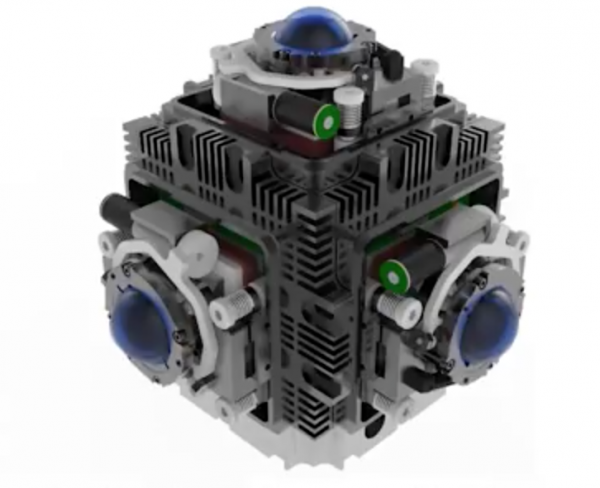By Vishal Goel, | January 26, 2017
- PREV
- Image1of0
- NEXT

PMast developed by University of California at San Diego has 5 sides with lenses and 25 megapixel sensors within
Researchers at the University of California at San Diego have found a way to build a 360-degree camera that is both compact and shoots high-quality video.
Like Us on Facebook
Currently in prototypal phase, the 360-degree camera called PMast is "as compact as a handful of cheap GoPro action cameras but can capture rich and high-resolution imagery that professionals need", said Joseph Ford, a UCSD professor working on the project.
However, Photonic Systems Integration Laboratory and Distant Focus Corporation, the creators of PMast, are not the only ones tackling the problems of 360-degree video. Google's Jump technology is designed to make it easier for videographers to build their own Virtual Reality (VR) camera designs. GoPro, a prominent Jump partner, has its own GoPro Odyssey camera rig, and Imax and Yi also have Jump designs. Among others, Jaunt and Nokia have their own high-end Ozo camera which costs $60,000.
The cost of the PMast camera has not yet been decided because it was originally designed for the Defense Advanced Research Projects Agency (DARPA) and thus, is not a commercial project. But it is not expected to be cheap because cinema-grade cameras typically cost tens of thousands of dollars, reports CNET.
Structure of the Camera
PMast, about the size of a conventional SLR, possesses a cubic design and combines spherical lenses with bundles of carefully engineered fiber-optic strands. Five faces of the camera have spherical lenses bubbling out with large 25-megapixel sensors within. The sixth face has a camera mounting stalk and a fiber-optic link to send data to computers that convert the images into a single wraparound video.
The core innovation in the PMast is said to be a lens that is 16mm smaller in diameter than a dime and provides excellent optical performance. Like Ford says, spherical lenses are insanely good at focusing light.
Mainstream lenses have to focus an image on a flat image sensor whereas spherical lenses are no good at focusing an image on a plane. But the PMast team found a way around the problem using fiber optics, which are superthin threads of glass that can transmit light along their length.
-
Use of Coronavirus Pandemic Drones Raises Privacy Concerns: Drones Spread Fear, Local Officials Say

-
Coronavirus Hampers The Delivery Of Lockheed Martin F-35 Stealth Fighters For 2020

-
Instagram Speeds Up Plans to Add Account Memorialization Feature Due to COVID-19 Deaths

-
NASA: Perseverance Plans to Bring 'Mars Rock' to Earth in 2031

-
600 Dead And 3,000 In The Hospital as Iranians Believed Drinking High-Concentrations of Alcohol Can Cure The Coronavirus

-
600 Dead And 3,000 In The Hospital as Iranians Believed Drinking High-Concentrations of Alcohol Can Cure The Coronavirus

-
COVID-19: Doctors, Nurses Use Virtual Reality to Learn New Skills in Treating Coronavirus Patients











